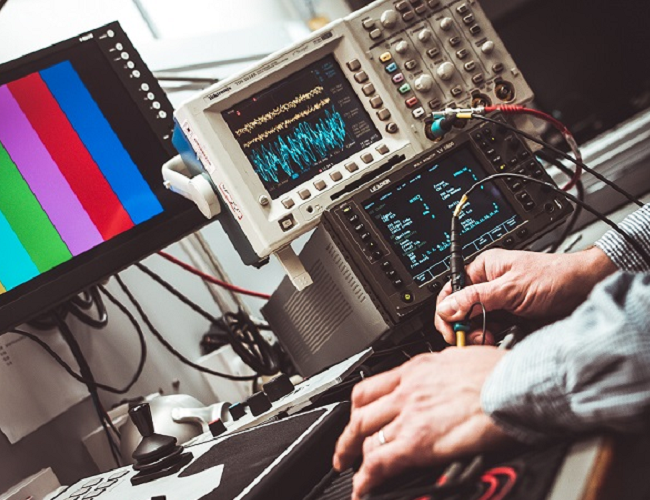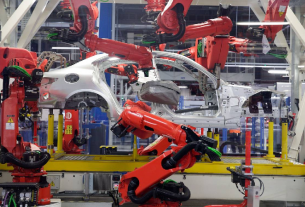Modern arguments around educational technology tend towards binary positions — usually for or against; this “position taking” makes the design of educational technology inaccessible because we’re not considering design, but rather positions. There are few compelling arguments against technology as learning tools, though even that depends on what students are learning and why.
We usually think of technology as a progressive thing, but any technology dates itself immediately through its form. Electricity, the wheel, paper, the printing press, metal working, mass transportation, masonry, and more are all forms of technology. Technology isn’t a leading edge, but a human practice. And, as such, it can both extend our humanity or reduce it based on its application.
We have been using technology so much these days in each and every domain of our lives, be it education or the regular household work, that have we ever taken out a second to wonder if it’s leaving a positive impact on our work or it’s just that we have been relying too much on it that we’ve become habitual to it, ignoring the direction of its impact?
Say for instance, is technology causing education to improve over time or have we just been catching up with the trend of educational technology. Earlier, technology in education was a debatable topic among the society. Everyone had their own views on modernizing education and making it technology aided. There were a huge number of positives and negatives to education technology.
But, gradually as technology was embraced by the educational institutes, they realized the importance of technology in education. Its positives outnumbered the negatives and now, with technology, education has taken a whole new meaning that it leaves us with no doubt that our educational system has been transformed owing to the ever-advancing technology. Technology and education are a great combination if used together with a right reason and vision.
Design: Audience and Purpose
On a day to day basis, human processes are based on prevailing local technology. That is, we usually use what’s available to us to express our collective humanity (for better or for worse). To solve problems, reduce inefficiencies, or create opportunities, we turn to the technology that is accessible to us, usually in the form of tools and processes.
Philosophically, this is important because, by design technology is an artificial process or product intended to circumvent natural limits or defies natural processes. This creates spectacle that is addictive. Are Icarus and Prometheus and the Luddites heroes or cautionary tales?
At ed.gov they define technology as “the collection of tools, including machinery, modifications, arrangements and procedures used by humans.” Oxford dictionary offers up a similar take, defining technology as “the application of scientific knowledge for practical purposes, especially in industry,” going on to tell us that the word technology comes from the early 17th century from the Greek word tekhnologia–‘systematic treatment’, from tekhnē ‘art, craft’ + -logia.
Art. Craft. Design. Humanity. Somewhere between and across these ideas there are glimpses of where technology is taking us, specifically within the “fields” of teaching and learning. The iPad is the latest node in a constantly-expanding concept map of shared experience. New technology builds on old technology.
Properly paced and scaled, we’re in control of this hyper-cycle the whole time, but unfortunately the designers and producers of technology design produce in isolation from their applied use, which makes audience and purpose considerations — prime matters of design — impossible.
But if we zoom out some, this isn’t so much about how iPads can function in a classroom, but the iPad as a matter of sequence. Technology never peaks. As students in 2015 grow and read and write and learn, technology will continue forward at breakneck speed because it evolves in isolation by standards of its own.
The iPad sales have recently stagnated after a mercurial rise that began April 3, 2010–only four and a half years. Wearable technology is among the threats to iPads as successful consumer products, but in education, Google’s slick cloud-integration is making them a more streamlined choice for many classrooms.
Educational Technology as a Principle
But more significantly, the life-cycle of the iPad in education emphasizes the incendiary, remorseless tone of technology. Arguments for or against iPads in classrooms is a bit like arguing Romney/Obama. It’s over, and holding that argument dates the arguers. I get why some teachers are against technology in education. Powerful learning models can be designed without technology because knowledge is the ultimate technology.

But if, as aft.org states, we think in terms of learning design, the argument that technology is already there and we’re simply arguing for a certain technology level can be useful. It’s not binary edtech-yes-or-no, but do we want old tech or new? If we think of technology as a matter of sequence, then technology isn’t so much a teaching strategy or educational tactic as it is a principle of learning.
When today’s elementary students are 40, they’ll remember iPads the way (many of us) remember cassette tapes. It will be funny that we used to hold large, heavy glass rectangles in their hands and had to open up apps separately. And had to know which app did what. And had to ‘Google’ information. And sometimes weren’t even connected to the internet because WiFi signals were unreliable. And didn’t have the information that we might need pushed to us before we even knew we needed it. And we had to type! We had to actually touch a screen or keyboard made of little plastic squares to make words — crazy times!
iPads and other existing mobile technology will be remembered like symbols — markers for a time and a place in their lives. This usefully decenters educational technology as some kind of spectacular edge, and frames it as a fundamental principle of modern learning.
Reading and writing have generally been regarded modern formal education. The ability to do each underpins the ability to make sense of an article or report, write an essay, memorize facts, evaluate cause and effect, conduct scientific experimentation, perform complicated mathematical calculations, and create poems and plays. These are the activities that actuate modern K-20 education.


